Art Nouveau in Poland
Art Nouveau in Poland (Polish: Secesja) was part of an international Art Nouveau style, although often absorbed into a local Polish style. It was most popular during 1890–1910.
Artists adopted many of the floral and organic motifs of Art Nouveau into the Young Poland style in Poland.[1] Young Poland, however, was also inclusive of other artistic styles and encompassed a broader approach to art, literature, and lifestyle.[2]
The Polish Art Nouveau style was centred in Kraków. Stanisław Wyspiański was the main Art Nouveau artist in Poland; his paintings, theatrical designs, stained glass, and building interiors are widely admired and celebrated in the National Museum in Kraków. Art Nouveau buildings survive in most Polish cities (Łódź, Kraków, Bydgoszcz), with the exception of Warsaw, where the few examples that survived the German Nazi razing of the city were destroyed by the Communist authorities on the grounds that the buildings were decadent.
The Zakopane Style architecture is part of Polish Art Nouveau style. Also Vienna Secession buildings can be found in various Polish cities.
Main centers of Art Nouveau buildings in Poland are Kraków, Łódź, Wrocław, Poznań and Bydgoszcz.
Notable Polish Art Nouveau architects include Franciszek Mączyński, Tadeusz Stryjeński, Ludwik Wojtyczko, Sławomir Odrzywolski, Beniamin Torbe, Romuald Miller, Wiktor Miarczyński.
Gallery
- Houses
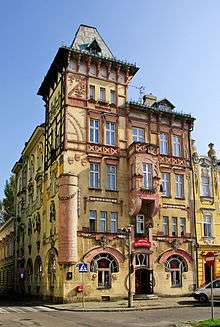
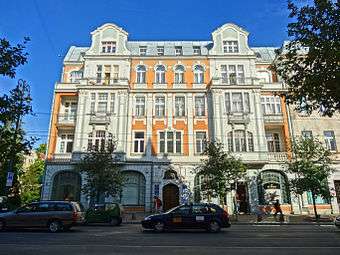 Eduard Schulz Tenement, Bydgoszcz
Eduard Schulz Tenement, Bydgoszcz Tenement Max Zweininger, Bydgoszcz
Tenement Max Zweininger, Bydgoszcz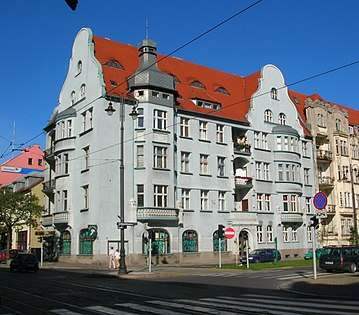 Rudolf Kern Tenement, Bydgoszcz
Rudolf Kern Tenement, Bydgoszcz- Poznań
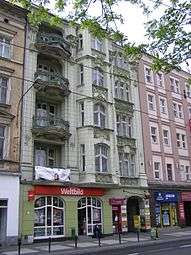 Poznań
Poznań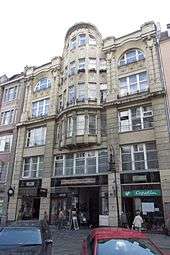 Poznań
Poznań- Poznań
-POL%2C_Krak%C3%B3w.jpg)
%2C_2_Szczepanski_square%2C_Old_Town%2C_Krakow%2C_Poland.jpg) Kraków
Kraków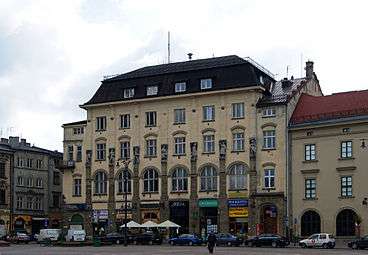 Kraków
Kraków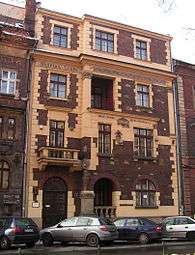 Kraków
Kraków- Kraków
%2C_9_Pilsudskiego_street%2C_Krakow%2C_Poland.jpg) Kraków
Kraków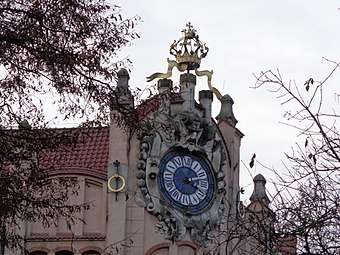 Kraków
Kraków.jpg)
- Warsaw
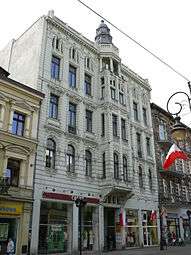
 Łódź
Łódź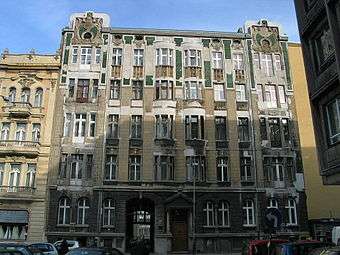 Łódź
Łódź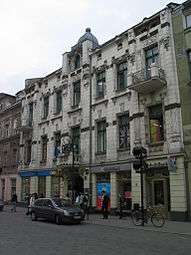 Łódź
Łódź Łódź
Łódź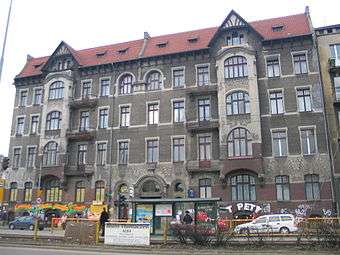 Łódź
Łódź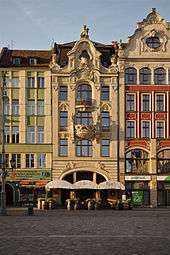
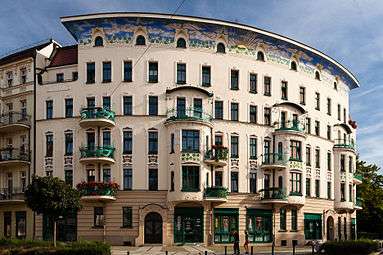 Wrocław
Wrocław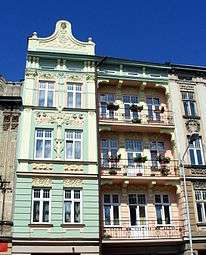
.jpg)
References
- Danuta A. Boczar, "The Polish Poster", Art Journal, vol. 44 (Spring, 1984), pp. 16–27 (esp. 16).
- Danuta Batorska, "Zofia Stryjeńska: Princess of Polish Painting", Woman's Art Journal, vol. 19 (Autumn, 1998–Winter, 1999), pp. 24–29 (esp. 24–25).